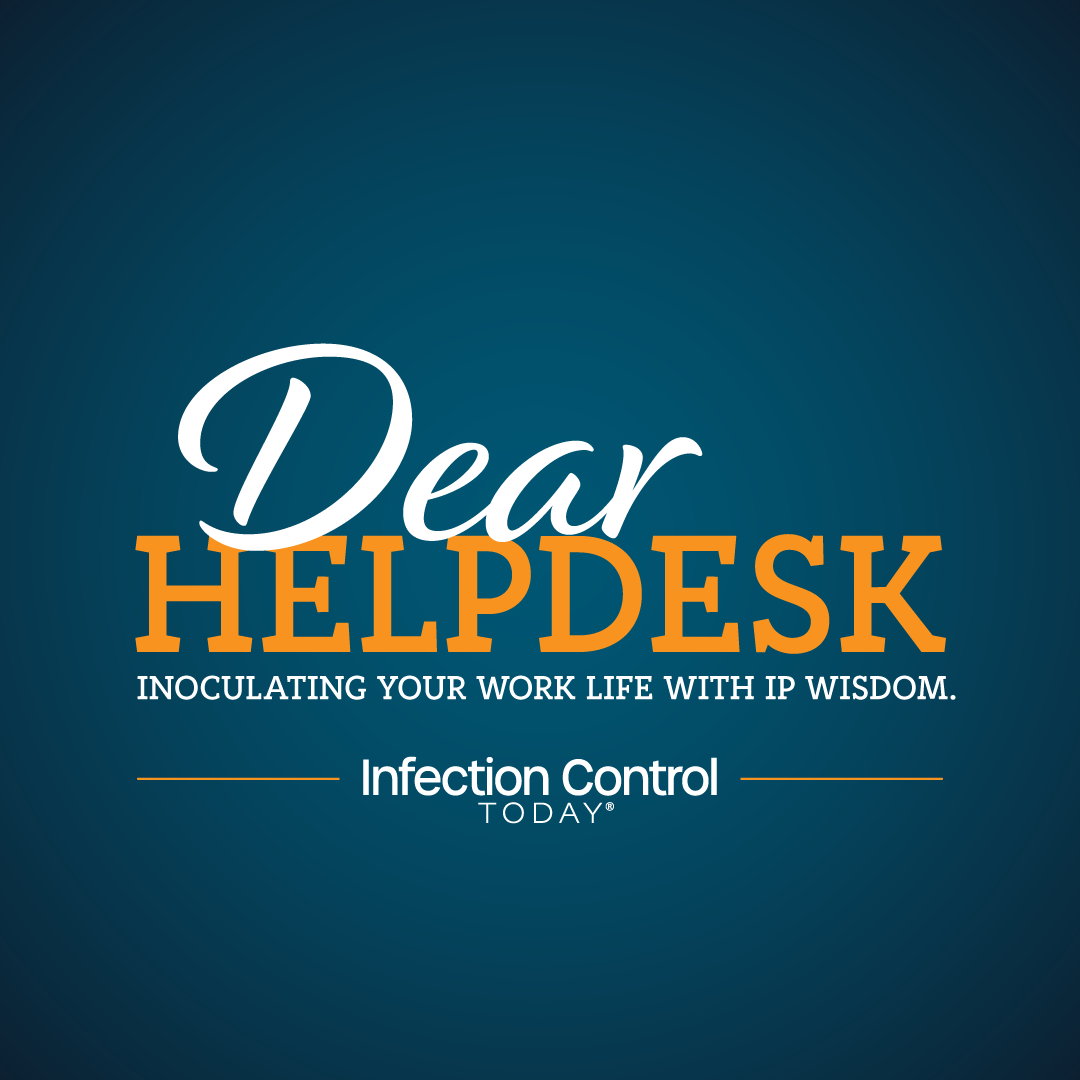Dealing With Burnout and Prioritization in Understaffed Infection Prevention Teams
An infection preventionist leader shares strategies for navigating overwhelming workloads, recruiting support, and communicating effectively with management while addressing burnout in an understaffed environment.
Dear Helpdesk by Infection Control Today.

Dear Helpdesk,
I work as an infection preventionist leader at a large acute care hospital. The infection prevention (IP) department has 3.0 full-time equivalent positions. Presently, only 2 of us cover more than 400 inpatient beds while I am recruiting for the third open position, which we have yet to be able to fill. I’ve been pushing myself to the limit, logging 60- to 70-hour weeks to try to keep up. I have requested prioritization, but my manager expects me to handle it all, threatening replacement. I am fearful of setting boundaries but also of being blamed regardless.
Sincerely,
Exhausted and defeated
Dear IP Superhero Duo,
My heart sank as I read your message. I cannot even imagine how incredibly challenging it must be to be understaffed and not receive the support you need from your leadership. This sounds like an overwhelming situation.
You and your mighty team of 2 are true IP superheroes, working tirelessly in the trenches to keep hundreds of patients safe—and doing it all while seriously understaffed. Working 60 to 70 hours a week is a recipe for burnout, and your manager’s response does not inspire confidence.
Here’s the deal: Your manager’s response is a huge red flag. But first, here are some things to consider and my thoughts on handling this workplace conundrum, because even superheroes need backup.
Image Credit: Brenna Doran, PhD, MA, ACC, CIC

Get Allies: Recruiting IP Guardians
First things first, building your IP dream team takes teamwork! You must feel the weight of the program, patient safety, and well-being of your fellow infection preventionists on your shoulders. It is time to pause, regroup, and recruit heavy hitters to your team. I recommend setting a wide net for recruits. The best IP team is a robust multidisciplinary team in which you can leverage the strengths of various colleagues to tackle this challenge—connecting with partners across the hospital to understand their needs and concerns. This will give you additional perspective on possible risk areas and the opportunity to recruit partners and collaborators to the cause.
In tandem, contact mentors and your professional network for valuable insights and support. They may have access to resources, technology, or tools you can use to help streamline workflows or processes. Most importantly, they offer support and a sounding board for ideas, and they remind you that you are not alone. Finally, tap into the expertise of your local Association for Professionals in Infection Control and Epidemiology chapter. They can offer valuable advice, recommendations to help you succeed, and tactics you may have yet to consider.
Knowledge Is Power: Identifying Vulnerabilities
Once you have recruited reinforcements, it is time to formulate a clear picture of the current state and take control of the workload. I recommend listing and labeling everything that needs to be done in the next 30, 60, and 90 days and beyond. Then, categorize each task as urgent/emergent, high priority, medium priority, or low priority. Focus your time and energy on including the most critical tasks (urgent/emergent and high priority).
Then, have an honest review of the list and ask yourself what you can realistically complete with your current resources working 40 hours per week. If not, what specific resources do you need—additional staff, time, or specialized support? I recommend adding these needs to your list to help you organize. Finally, don’t forget the consequences of neglect. What are the potential risks to patient safety and regulatory compliance if these critical tasks are left unaddressed? Include those on your list too.
Superhero Duo
(Image credit: Author with AI)

For example, if you use a spreadsheet program, your list may look like this. The goal is to list, sort, and tag the items in a format that is easy for you to follow and others to understand.
Develop Strategies, Covering Your Flank
Once you have your list, it is time to create a battle plan to reclaim control. First, analyze your list. What themes are you noting regarding resources needed? Are there ways to streamline your workflow and make any processes more efficient? Can technology or outsourcing be used to tackle simple or repetitive tasks? For example, can automated reports be reconfigured or maximized to reduce the time needed to clean up data or filter extraneous information? If so, what changes are required to the report? If you are using an electronic surveillance program, you can connect with vendor support on how to make report changes on your own or with related resources. Finally, explore lightening your load by requesting extensions or opting out of nonessential audits or programs for the time being. By strategically rethinking your approach, you can free up valuable resources and fight back against the feeling of being overextended.
Full Disclosure, Superhero’s Handbook
Now that you are armed and have a game plan, it is time to tackle the next steps with your manager. Schedule a meeting with your manager to share everything you have learned. This includes your prioritized workload and any estimates on potential patient safety and regulatory risks. Be prepared to share your plan to address these issues and what partners you have engaged and have buy-in from.
Here’s the key part: Ask your manager directly, “From your perspective, what changes are needed in prioritization or deliverables?” Make sure to document their feedback and adjust your plan accordingly. Finally, set up a regular meeting with your manager, maybe biweekly or monthly, to continue using this format. The goal is to work together: Share your solutions and plan, get their input (if any), and then implement the plan. If your manager cannot meet in person, email them with all this information and ask for a response outlining any changes they have in mind. Remember, you are receiving a lack of complete agreement to the plan and prioritization of deliverables.

How Contaminated Is Your Stretcher? The Hidden Risks on Hospital Wheels
July 3rd 2025Despite routine disinfection, hospital surfaces, such as stretchers, remain reservoirs for harmful microbes, according to several recent studies. From high-touch areas to damaged mattresses and the effectiveness of antimicrobial coatings, researchers continue to uncover persistent risks in environmental hygiene, highlighting the critical need for innovative, continuous disinfection strategies in health care settings.
Beyond the Surface: Rethinking Environmental Hygiene Validation at Exchange25
June 30th 2025Environmental hygiene is about more than just shiny surfaces. At Exchange25, infection prevention experts urged the field to look deeper, rethink blame, and validate cleaning efforts across the entire care environment, not just EVS tasks.
A Controversial Reboot: New Vaccine Panel Faces Scrutiny, Support, and Sharp Divides
June 26th 2025As the newly appointed Advisory Committee on Immunization Practices (ACIP) met for the first time under sweeping changes by HHS Secretary Robert F. Kennedy Jr, the national spotlight turned to the panel’s legitimacy, vaccine guidance, and whether science or ideology would steer public health policy in a polarized era.